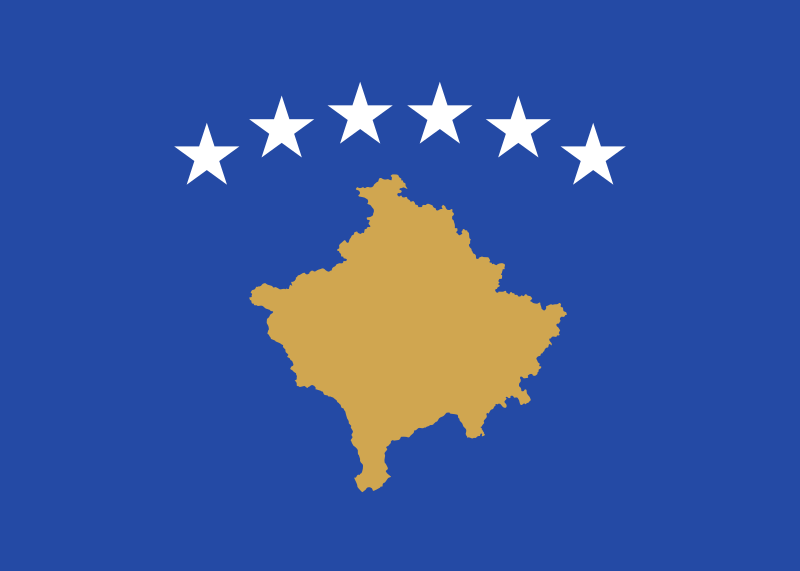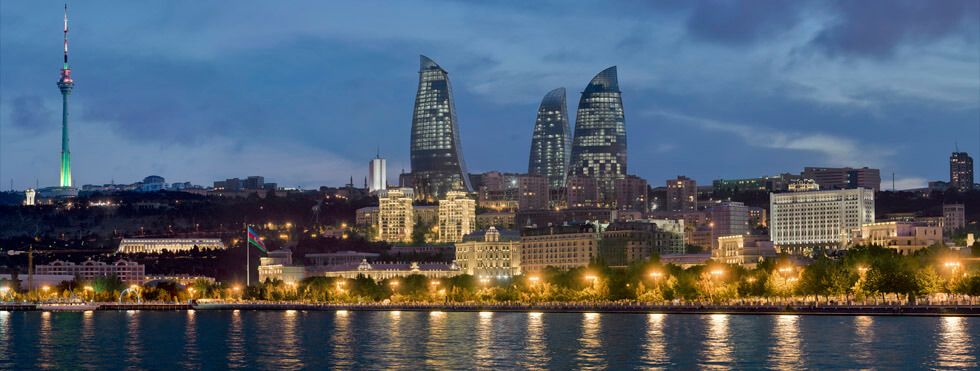General Information
Population
10.119.100 (STAT AZ 2021)
10.110.116 (World Bank: 2020)
Immigration
252.228 (UN DESA Immigration Stock 2020)
2.042 (Flow by STAT AZ 2019)
Emigration
1.163.922 (UN DESA Emigration Stock 2020)
1.654 (Flow STAT AZ 2019)
Working-age population
6.940.900 (STAT AZ 2021)
7.051.107 (World Bank 2020)
Unemployment rate
7.2 (AZ STAT 2020)
GDP
72432.2 mln, current prices AZN (STAT AZ 2020)
42607.18 mln, current prices USD (World Bank: 2020)
Refugees and IDPs
Refugees:
1.582 (UN Refugee Stock 2020)
Asylum seekers:
IDPs:
653921 (UNHCR 2020)
753,000 (IDMC 2020)
Territory
86.600 km² (CIA World Factbook)
Migration Authorities
Responsible Body
Line Ministries
Agencies
Description
The Republic of Azerbaijan features substantial cross-border movements, both from and into the country. For 2018, the CIS portal reveals an influx of 2,845,679 and outflow of 2,842,773 foreigners. In 2020, these figures decreased threefold, presumably owing to COVID-19. Meanwhile, the national statistics of Azerbaijan only reflect foreigners holding permanent residence permits. In 2019, there were 2,042 immigrants and 1,654 emigrants according to the State Migration Service and the Ministry of Internal Affairs.
Among the post-Soviet countries, Azerbaijan had one of the highest emigration rates of nearly 20 % of its total population, resulting in over one million nationals residing abroad. Since 2010, this rate has been in decline, amounting to 10,6 % in 2020 (calculation is based on the national population statistics and UN Migrant Stocks at mid-year). This change largely occurred due to the growth in population, which surpassed the ten million mark in 2020. Azerbaijan is one of few Prague Process countries experiencing population growth and is projected to remain the most populous country in the South Caucasus until 2045.
Emigration from Azerbaijan is mostly a regional phenomenon. Based on the UN migrant stocks 2019, the most populous Azerbaijani communities exist in Russia, Ukraine, and Kazakhstan. Altogether, these countries are home to nearly one million Azerbaijani nationals. Russia still represents the prime target. In 2019, over one million Azerbaijani nationals crossed the border with Russia in both directions with over 75 % coming for private purposes and some 11 % (over 138,000) for work reasons. Meanwhile, the number of work patents and other work permits issued to Azerbaijani nationals in Russia in 2019 exceeded 55,000. In recent years, Turkey also became one of the preferred destinations of Azerbaijani nationals, recording an increase in stocks and flows. In 2019, they reached over 22.000 and over 26,000 respectively. Within the EU, the main destinations are Germany, France, Poland, the Netherlands and Sweden, with the former issuing most first-time residence permits (2,690 in 2019), as well as hosting most Azerbaijani nationals with valid residence permits at the end of 2019 (13,338). While family reunification is the most common reason for granting residency, Poland has issued most permits for work reasons, and France – on international protection grounds.
On par with declining emigration, immigration to Azerbaijan has also decreased. Since 2010, the immigrant stock decreased significantly, reaching 252,228 in 2020. In 2016-2018, the flow remained rather stable with over 3,000 immigrants per year, although it shrank by one third in 2019. As of 2013, Georgians, Russians and Turks represent the three main groups of immigrants. Turkish nationals hold most long-term work permits in Azerbaijan, followed by citizens of Ireland and India. Irregular migration has equally declined from over 21,000 persons violating the national migration law in 2017 to some 7,300 persons in 2020. Over the same period, the annual number of asylum seekers fluctuated from 671 to 93 persons, most of whom were nationals of Afghanistan, Pakistan and Iran. The recognition rate remains low and did not exceed ten persons over three years. However, due to the unresolved conflict over Nagorno-Karabakh, Azerbaijan hosts the second largest number of IDPs in Central Asia and Eastern Europe amounting to 753,000. Amongst them, 84,000 were displaced in 2020 due to the most violent flare up of conflict since 1994.
Assessing the regular return migration to Azerbaijan remains challenging due to statistical limitations. The number of returning emigrants from e.g. Russia can provide only a relative estimate: some 50,000 nationals of Azerbaijan left Russia in 2017-2019. Meanwhile, the return rates of irregular Azerbaijani migrants from the EU increased twofold from 42 % in 2015 (out of 1,040 persons who were ordered to leave 445 actually returned) to over 97 % in 2019 (1,340 returned out of 1380).
Azerbaijan endorsed the Global Compact for Migration and recently developed the new National Migration Strategy on Migration for 2020-2025 (adoption yet pending in August 2021) in compliance with relevant international legal frameworks. The country also performed a diaspora mapping, providing insights into the skills and demographic profiles of Azerbaijani diaspora communities. In May 2020, Azerbaijan amended its Migration Code by widening the options for temporary residence permits on education grounds. Meanwhile, in June 2020 the country amended its Criminal Code along with the Law on Citizenship by eliminating the prosecution of Azerbaijani citizens who have acquired the citizenship of a foreign state. On 17 March 2021, Azerbaijan signed the Seat Agreement with ICMPD on the status of the latter in the Republic.
- Population: 2 845 955
- Emigration: 43 853
- Immigration: 20 753

- Population: 2 961 900
- Emigration: 31 200
- Immigration: 15 800

- Population: 8 978 929
- Emigration: 101 714
- Immigration: 154 202

- Population: 10 119 100
- Emigration: 1 654
- Immigration: 2 042

- Population: 9 349 645
- Emigration: 20 976
- Immigration: 34 846

- Population: 11 521 238
- Emigration: 102 413
- Immigration: 41 756

- Population: 3 475 000
- Emigration: 1 671 177
- Immigration: 37 100

- Population: 6 838 937
- Emigration: 26 755
- Immigration: 39 461

- Population: 4 047 680
- Emigration: 34 046
- Immigration: 33 414

- Population: 918 000
- Emigration: 17 373
- Immigration: 26 170

- Population: 10 519 913
- Emigration: 19 232
- Immigration: 69 201

- Population: 5 873 420
- Emigration: 50 171
- Immigration: 76 552

- Population: 1 331 796
- Emigration: 12 481
- Immigration: 19 524

- Population: 5 550 066
- Emigration: 13 459
- Immigration: 36 364

- Population: 67 813 396
- Emigration: 29 000
- Immigration: 169 000

- Population: 3 728 600
- Emigration: 74 264
- Immigration: 89 996

- Population: 83 200 000
- Emigration: 966 451
- Immigration: 1 186 702

- Population: 10 432 481
- Emigration: 77 837
- Immigration: 84 221

- Population: 9 689 010
- Emigration: 21 730
- Immigration: 49 069

- Population: 5 011 000
- Emigration: 54 000
- Immigration: 65 200

- Population: 58 983 122
- Emigration: 159 884
- Immigration: 247 526

- Population: 18 984 845
- Emigration: 29 110
- Immigration: 11 447

- Population: 1 798 188
- Emigration: 8 724
- Immigration: 11 543

- Population: 6 636 800
- Emigration: 961
- Immigration: 5 822

- Population: 1 875 757
- Emigration: 12 975
- Immigration: 12 689

- Population: 39 315
- Emigration: 432
- Immigration: 713

- Population: 2 805 998
- Emigration: 25 205
- Immigration: 44 858

- Population: 645 397
- Emigration: 15 959
- Immigration: 25 335

- Population: 519 562
- Emigration: 12 679
- Immigration: 13 885

- Population: 3 542 708
- Emigration: 2 243
- Immigration: 4 223

- Population: 619 211
- Emigration: 6 631
- Immigration: 6 008

- Population: 17 600 000
- Emigration: 142 517
- Immigration: 250 792

- Population: 2 097 319
- Emigration: 1 082
- Immigration: 1 848

- Population: 5 435 536
- Emigration: 34 297
- Immigration: 53 947

- Population: 38 914 000
- Emigration: 8 780
- Immigration: 13 263

- Population: 10 344 802
- Emigration: 68 209
- Immigration: 111 311

- Population: 19 186 201
- Emigration: 192 631
- Immigration: 163 806

- Population: 146 171 015
- Emigration: 487 672
- Immigration: 594 146

- Population: 6 871 547
- Emigration: 26 858
- Immigration: 11 306

- Population: 5 431 306
- Emigration: 2 428
- Immigration: 17 507

- Population: 2 107 180
- Emigration: 17 745
- Immigration: 36 110

- Population: 47 385 107
- Emigration: 381 724
- Immigration: 530 401

- Population: 10 475 204
- Emigration: 48 284
- Immigration: 90 631

- Population: 8 736 500
- Emigration: 114 600
- Immigration: 165 600

- Population: 9 506 300
- Emigration: 54 495
- Immigration: 40 859

- Population: 84 680 273
- Emigration: 330 289
- Immigration: 677 042

- Population: 6 200 000

- Population: 41 418 717
- Emigration: 19 121
- Immigration: 26 361

- Population: 67 081 000
- Emigration: 334 000
- Immigration: 573 000

- Population: 35 079 200
- Emigration: 13 648
- Immigration: 1 105


